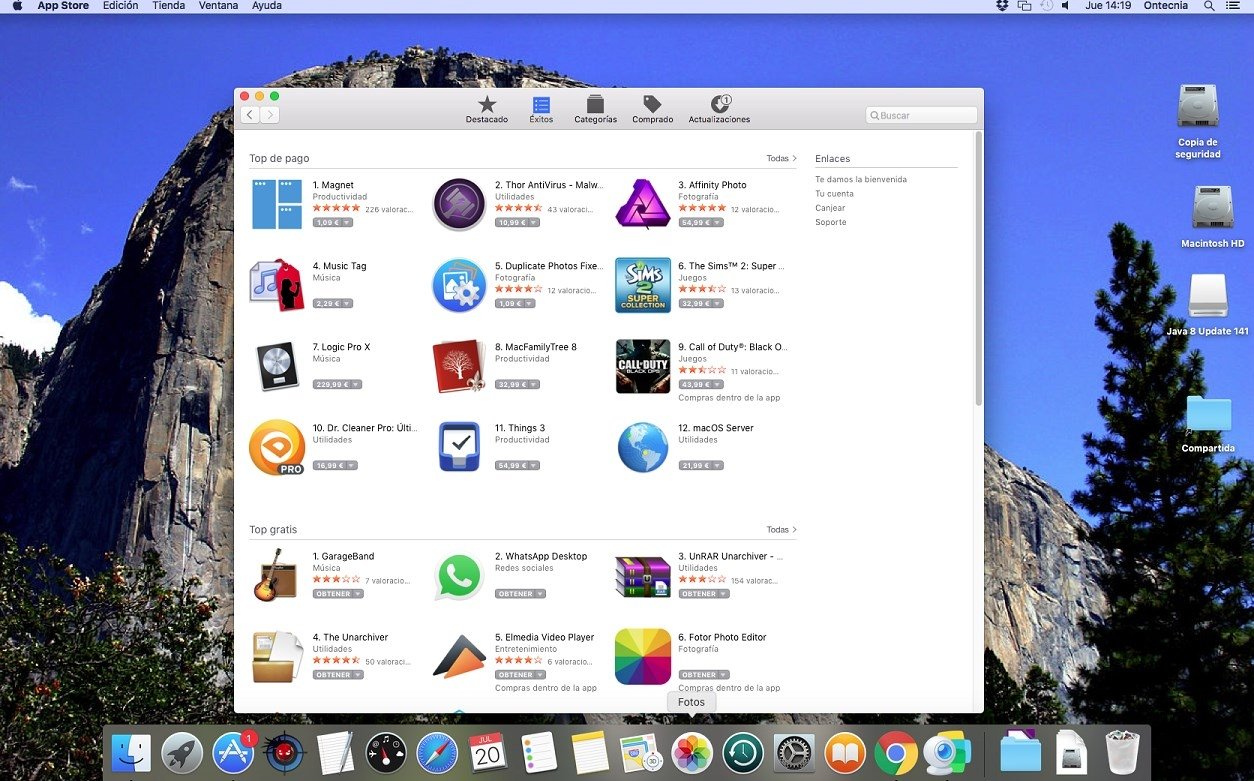El Capitan 10.11.6 is now released as the latest version of Download El Capitan. For OS X El Capitan users this update is recommended. The upgrade to OS X El Capitan v10.11.6 enhances your Mac's reliability, performance and protection and is advised for all users. Solves a problem that can prevent parental control accounts from saving settings. Whether or not you've downloaded it in the past, you can now download OS X El Capitan 10.11.6 (6.21 GB) via this link which will open first in the Browser, then in the App Store. OS X El Capitan. This version of OS X El Capitan is for users running OS X Snow Leopard who would like to upgrade to macOS Sierra. Whether or not you've downloaded it in the past, you can now download OS X El Capitan 10.11.6 (6.21 GB) via this link which will open first in the Browser, then in the App Store. OS X El Capitan. This version of OS X El Capitan is for users running OS X Snow Leopard who would like to upgrade to macOS Sierra.
- Download El Capitan from the Mac App Store. Head over to your existing OS X environment running 10.9 or later and open the Mac App Store. Search for 'El Capitan' and click Download. The download is completely free if you're running OS X 10.9+. Wait for the download to finish (this could take some time). Format the USB Drive.
- Softonic-recensie Yosemite just got bigger. El Capitan, or Mac OS X 10.11, is the latest update of Apple’s operating system for Mac. This marks the first time in a while that the release of OS X and iOS (iOS 9) have appeared almost simultaneously – allowing for more synergy between the platforms.

On this page:
How Do I Download Os X El Capitan Without App Store

Mac Os X El Capitan Iso Download
- Reinstall El Capitan on a computer alreadyrunning it

Upgrade from previous versions to OS X 10.11 (El Capitan)
- From the Apple menu, select App Store....
- When the App Store opens, search for and download El Capitan. If you don't already have an Apple ID, you'll need to create one. You can monitor the download process in the 'Purchased' section of the App Store.
- Once the download is complete, the installer should automatically open.
If it doesn't, or you don't want to complete the installation at this time, you can come back later and double-click Install OS X El Capitan in your
Applicationsfolder.Within the installer, click Continue, agree to the license agreement, and then choose the disk where you want to install El Capitan.
After you begin the installation, your computer may need to restart more than once before finishing, and then you may be asked to enter basic information.
- From the Apple menu, select App Store..., and then install any available updates.

Reinstall El Capitan on a computer already running it

Reinstall while keeping files, applications, and settings
- Restart your computer, and immediately hold down
command-runtil the gray Apple logo appears. - If prompted, select your main language and then click the arrow.
- Click Reinstall OS X, and then Continue. Follow the instructions on the screen, and then choose your hard disk. Click Install, and enter your Apple ID information if prompted.
- When the installation is complete, select App Store... from the Apple menu, and install any available updates.
Reinstall while erasing everything on your computer
Restart your computer, and immediately hold down
command-runtil the gray Apple logo appears.- If you see a screen asking you to select your main language, choose it, and then click the arrow.
- Click Disk Utility, and then Continue.
- In Disk Utility:
- Click your hard disk in the left column, and then click the Erase tab.
- Next to 'Format:', make sure OS X Extended (Journaled) is selected. In the 'Name:' field, give your disk a name. Click Erase.
- Once it's completed, quit Disk Utility.
- Click Reinstall OS X, and then Continue:
- Follow the instructions on the screen, and then choose your hard disk.
- Click Install. If prompted, enter your Apple ID information.
- Once the installation is complete, you'll be asked to enter basic information, and have the option to transfer data from another computer or backup.
- From the Apple menu, select App Store, and then install any available updates.